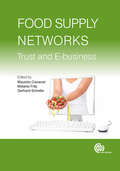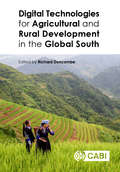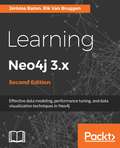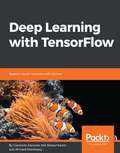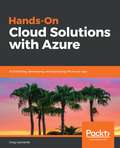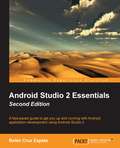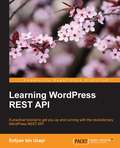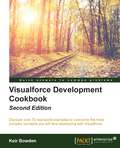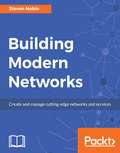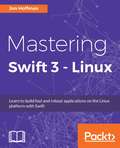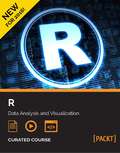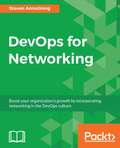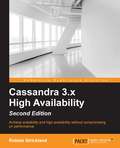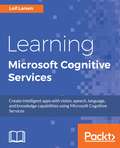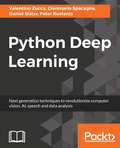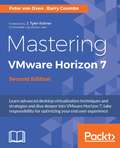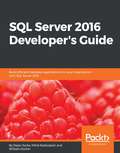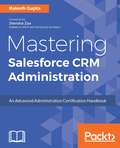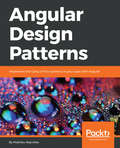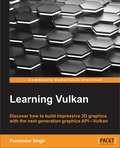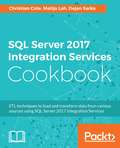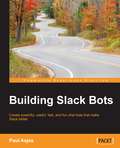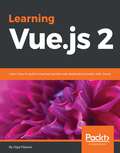- Table View
- List View
#NoFilter: Get Creative with Photography
by Natalia Price-Cabrera#NoFilter is an innovative new guide to photography that shows you how to ditch photo filters and discover DIY creative techniques with your camera or smart phone.If you want to inject more excitement into your photography than just applying a filter in an app, this book is for you. It will inspire you to take your photos further, with ideas aimed at all levels of ability from amateur to professional. Easy techniques such as shooting through your sunglasses progress to more advanced ideas like creating sun prints or distorting your images with the contents of your kitchen cupboard. Each technique is concisely explained through great examples of creative photography, making this an ideal book for anyone wanting to take their photos to another level."Natalia Price-Cabrera’s #NoFilter is a book of spells filled with ideas for transforming digital and analogue pictures into something magical." Black + White PhotographyMore best-selling photography books from Laurence King Publishing:- Read This If You Want to Take Great Photographs by Henry Carroll (97817806733560)- Bystander: A History of Street Photography by Joel Meyerowitz and Colin Westerbeck (9781786270665)
Food Supply Networks: Trust and E-business
by Gert Jan Hofstede Nicola Cantore Rainer Haas Lisa House Aris Matopoulos Rodney Bray Oliver MeixnerWhen relations are facilitated by communication technologies such as e-business, food supply networks can improve efficiency, flexibility and effectiveness. However, a lack of trust within such transactions can prevent the integration of e-business into this large, economic sector. Using case studies from European countries, chapters discuss trust-building methods for food networks in an e-business environment. Key issues include the influence of cultural disparity and cross-border transactions upon major product groups such as meat, cereal products and fresh produce.
Digital Technologies for Agricultural and Rural Development in the Global South
by Stefano Bocchi Fritz Brugger Amanda Caine Amit Chakravarty Chris Clarke Graham Clarkson Andrew Dearden Peter Dorward Richard Duncombe Gordon Gow Charlotte Jordan Linus Kendall Stan Karanasios Sumanth Kumar Luis Emilio Lastra-Gil Alberto Lubatti Mukund Patil Andrea Porro Simone Sala Worlali Senyo Mira Slavova Luka WanjohiThis book shares research and practice on current trends in digital technology for agricultural and rural development in the Global South. Growth of research in this field has been slower than the pace of change for practitioners, particularly in bringing socio-technical views of information technology and agricultural development perspectives together. The contents are therefore structured around three main themes: sharing information and knowledge for agricultural development, information and knowledge intermediaries, and facilitating change in agricultural systems and settings. The book includes: -Views from diverse academic disciplines as well as practitioners with experience of implementing mobile applications and agriculture information systems in differing country contexts. -Case studies from a range of developing countries and information from across the public and private sector. -A set of practitioner guidelines for successful implementation of digital technologies. With contributions reaching beyond just a technological perspective, the book also provides a consideration of social and cultural factors and new forms of organization and institutional change in agricultural and rural settings. An invaluable read for researchers in international development, socio-economics and agriculture, it forms a useful resource for practitioners working in the area.
Digital Technologies for Agricultural and Rural Development in the Global South
by Richard DuncombeThis book shares research and practice on current trends in digital technology for agricultural and rural development in the Global South. Growth of research in this field has been slower than the pace of change for practitioners, particularly in bringing socio-technical views of information technology and agricultural development perspectives together. The contents are therefore structured around three main themes: sharing information and knowledge for agricultural development, information and knowledge intermediaries, and facilitating change in agricultural systems and settings. The book includes: -Views from diverse academic disciplines as well as practitioners with experience of implementing mobile applications and agriculture information systems in differing country contexts. -Case studies from a range of developing countries and information from across the public and private sector. -A set of practitioner guidelines for successful implementation of digital technologies. With contributions reaching beyond just a technological perspective, the book also provides a consideration of social and cultural factors and new forms of organization and institutional change in agricultural and rural settings. An invaluable read for researchers in international development, socio-economics and agriculture, it forms a useful resource for practitioners working in the area.
Learning Neo4j 3.x - Second Edition
by Jerome Baton Rik Van BruggenRun blazingly fast queries on complex graph datasets with the power of the Neo4j graph database About This Book • Get acquainted with graph database systems and apply them in real-world use cases • Use Cypher query language, APOC and other Neo4j extensions to derive meaningful analysis from complex data sets. • A practical guide filled with ready to use examples on querying, graph processing and visualizing information to build smarter spatial applications. Who This Book Is For This book is for developers who want an alternative way to store and process data within their applications. No previous graph database experience is required; however, some basic database knowledge will help you understand the concepts more easily. What You Will Learn • Understand the science of graph theory, databases and its advantages over traditional databases. • Install Neo4j, model data and learn the most common practices of traversing data • Learn the Cypher query language and tailor-made procedures to analyze and derive meaningful representations of data • Improve graph techniques with the help of precise procedures in the APOC library • Use Neo4j advanced extensions and plugins for performance optimization. • Understand how Neo4j's new security features and clustering architecture are used for large scale deployments. In Detail Neo4j is a graph database that allows traversing huge amounts of data with ease. This book aims at quickly getting you started with the popular graph database Neo4j. Starting with a brief introduction to graph theory, this book will show you the advantages of using graph databases along with data modeling techniques for graph databases. You'll gain practical hands-on experience with commonly used and lesser known features for updating graph store with Neo4j's Cypher query language. Furthermore, you'll also learn to create awesome procedures using APOC and extend Neo4j's functionality, enabling integration, algorithmic analysis, and other advanced spatial operation capabilities on data. Through the course of the book you will come across implementation examples on the latest updates in Neo4j, such as in-graph indexes, scaling, performance improvements, visualization, data refactoring techniques, security enhancements, and much more. By the end of the book, you'll have gained the skills to design and implement modern spatial applications, from graphing data to unraveling business capabilities with the help of real-world use cases. Style and approach A step-by-step approach of adopting Neo4j, the world's leading graph database. This book includes a lot of background information, helps you grasp the fundamental concepts behind this radical new way of dealing with connected data, and will give you lots of examples of use cases and environments where a graph database would be a great fit
Deep Learning with TensorFlow
by Giancarlo Zaccone Md. Rezaul Karim Ahmed MenshawyDelve into neural networks, implement deep learning algorithms, and explore layers of data abstraction with the help of this comprehensive TensorFlow guide About This Book • Learn how to implement advanced techniques in deep learning with Google's brainchild, TensorFlow • Explore deep neural networks and layers of data abstraction with the help of this comprehensive guide • Real-world contextualization through some deep learning problems concerning research and application Who This Book Is For The book is intended for a general audience of people interested in machine learning and machine intelligence. A rudimentary level of programming in one language is assumed, as is a basic familiarity with computer science techniques and technologies, including a basic awareness of computer hardware and algorithms. Some competence in mathematics is needed to the level of elementary linear algebra and calculus. What You Will Learn • Learn about machine learning landscapes along with the historical development and progress of deep learning • Learn about deep machine intelligence and GPU computing with the latest TensorFlow 1.x • Access public datasets and utilize them using TensorFlow to load, process, and transform data • Use TensorFlow on real-world datasets, including images, text, and more • Learn how to evaluate the performance of your deep learning models • Using deep learning for scalable object detection and mobile computing • Train machines quickly to learn from data by exploring reinforcement learning techniques • Explore active areas of deep learning research and applications In Detail Deep learning is the step that comes after machine learning, and has more advanced implementations. Machine learning is not just for academics anymore, but is becoming a mainstream practice through wide adoption, and deep learning has taken the front seat. As a data scientist, if you want to explore data abstraction layers, this book will be your guide. This book shows how this can be exploited in the real world with complex raw data using TensorFlow 1.x. Throughout the book, you'll learn how to implement deep learning algorithms for machine learning systems and integrate them into your product offerings, including search, image recognition, and language processing. Additionally, you'll learn how to analyze and improve the performance of deep learning models. This can be done by comparing algorithms against benchmarks, along with machine intelligence, to learn from the information and determine ideal behaviors within a specific context. After finishing the book, you will be familiar with machine learning techniques, in particular the use of TensorFlow for deep learning, and will be ready to apply your knowledge to research or commercial projects. Style and approach This step-by-step guide will explore common, and not so common, deep neural networks and show how these can be exploited in the real world with complex raw data. With the help of practical examples, you will learn how to implement different types of neural nets to build smart applications related to text, speech, and image data processing.
Hands-On Cloud Solutions with Azure: Architecting, developing, and deploying the Azure way
by Greg LeonardoDesign effective Azure architecture and transform your IT business solutionsKey FeaturesDevelop a resilient and robust cloud environmentDeploy and manage cost-effective and highly available solutions on your public cloudDesign and implement enterprise-level cloud solutionsBook DescriptionAzure provides cloud-based solutions to support your business demands. Building and running solutions on Azure will help your business maximize the return on investment and minimize the total cost of ownership.Hands-On Cloud Solutions with Azure focuses on addressing the architectural decisions that usually arise when you design or migrate a solution to Microsoft Azure. You will start by designing the building blocks of infrastructure solution on Azure, such as Azure compute, storage, and networking, followed by exploring the database options it offers. You will get to grips with designing scalable web and mobile solutions and understand where to host your Active Directory and Identity Solution. Moving on, you’ll learn how to extend DevOps to Azure.You will also beneft from some exciting services that enable extremely smooth operations and streamlined DevOps between on-premises and cloud. The book will help you to design a secure environment for your solution, on both the Cloud and hybrid. Toward the end, you’ll see how to manage and monitor cloud and hybrid solutions.By the end of this book, you will be armed with all the tools and knowledge you need to properly plan and design your solutions on Azure, whether it’s for a brand new project or migration project.What you will learnGet started with Azure by understanding tenants, subs, and resource groupsDecide whether to “lift and shift” or migrate appsPlan and architect solutions in AzureBuild ARM templates for Azure resourcesDevelop and deploy solutions in AzureUnderstand how to monitor and support your application with AzureMake your life easier with Azure best practices and tipsWho this book is forIf you’re an IT consultant, developer, or solutions architect looking to design effective solutions for your organization, this book is for you. Some knowledge of cloud computing will assist with understanding the key concepts covered in this book.
Android Studio Essentials
by Belen Cruz ZapataThis book is intended for developers who are interested in getting acquainted with the concepts of Android Studio in a very short span of time. It is assumed that you are familiar with the OOPS paradigm and Java. It is also recommendable to have prior knowledge of the main characteristics of the Android mobile system.
Learning WordPress REST API
by Sufyan Bin UzayrA practical tutorial to get you up and running with the revolutionary WordPress REST API About This Book * Learn how to run the latest WordPress REST API with various platforms * Create exciting apps and manage non-WordPress content with them * Secure, export, and manage your data through illustrative examples Who This Book Is For This book is for WordPress developers and designers who want to get a complete practical understanding of the WordPress REST API and leverage it to create fully-featured web apps. What You Will Learn * Use the WordPress REST API to read, write, and edit posts * Create and work with metadata using the WordPress REST API * Work with taxonomies using the REST API * Add custom routes and build apps using the WordPress REST API * Process requests and integrate with external applications and frameworks * Make your WordPress projects ready for the RESTful API standard In Detail The WordPress REST API is a recent innovation that has the potential to unlock several new opportunities for WordPress developers. It can help you integrate with technologies outside of WordPress, as well as offer great flexibility when developing themes and plugins for WordPress. As such, the REST API can make developers' lives easier. The book begins by covering the basics of the REST API and how it can be used along with WordPress. Learn how the REST API interacts with WordPress, allowing you to copy posts and modify post metadata. Move on to get an understanding of taxonomies and user roles are in WordPress and how to use them with the WordPress REST API. Next, find out how to edit and process forms with AJAX and how to create custom routes and functions. You will create a fully-functional single page web app using a WordPress site and the REST API. Lastly, you will see how to deal with the REST API in future versions and will use it to interact it with third-party services. By the end of the book, you will be able to work with the WordPress REST API to build web applications. Style and Approach A step by step tutorial to explain the new and exciting world of the WordPress REST API with the real world examples.
Visualforce Development Cookbook - Second Edition
by Keir BowdenDiscover over 70 real-world examples to overcome the most complex concepts you will face developing with Visualforce About This Book * This book provides an enhanced user experience with dynamically-generated, reactive pages * Access data over additional channels via public web sites and mobile pages * Packed with easy-to-follow recipes, including step-by-step instructions and Apex/Visualforce code downloads this title is the all in one package you need to get more from Visualforce. Who This Book Is For This book will be beneficial to developers who are already well-versed with the basics of Visualforce. An awareness of the standard component library and the purpose of controllers is expected. What You Will Learn * Pass parameters between Visualforce pages * Update attributes in component controllers * Avoid validation errors with action regions * Refresh record details from embedded Visualforce * Create and develop a website template from scratch * Get to know about the Salesforce Lightening Design system and use Visualforce in Salesforce1 * Effectively tackle frequently-faced problems while developing Visualforce pages In Detail Visualforce is a framework that allows developers to build sophisticated, custom user interfaces that can be hosted natively on the Force.com platform. The Visualforce framework includes a tag-based markup language, similar to HTML that is used to write the Visualforce pages and a set of controllers that are used to write business logic to the Visualforce pages. Visualforce Development Cookbook provides solutions to a variety of challenges faced by Salesforce developers and demonstrates how easy it is to build rich, interactive pages using Visualforce. Whether you are looking to make a minor addition to the standard page functionality or override it completely, this book will provide you with the help you require throughout. You will start by learning about the simple utilities and will build up to more advanced techniques for data visualization and to reuse functionality. You will learn how to perform various tasks such as creating multiple records from a single page, visualizing data as charts, using JavaScript to enhance client-side functionality, building a public website, and making data available to a mobile device. With an interesting chapter on tackling common issues faced while developing Visualforce pages, the book provides lots of practical examples to enhance and extend your Salesforce user interface. Style and approach Following a cookbook structure, the book provides recipes on some essential technical scenarios and a few that focus on real-world development problems. This book is packed with illustrations and contains lots of code samples to improve your understanding.
Building Modern Networks
by Steven NobleGain the edge with SDN, NFV, network virtualization, and networking on clouds About This Book • Navigate through the complexities of delivering modern networking services with practical techniques and solutions • Build robust software defined networks and solve real-world problems involving challenges with next generation networks • Discover the best practices used by top industry professionals for network-related architecture, services, and applications and secure your networks Who This Book Is For This book is for Network Engineers and Network Administrators who are taking their first steps when deploying software-defined networks. Network Architects will also find this book useful when designing and building modern networks. What You Will Learn • Understand Traditional Network Challenges to match modern applications requirements • Find out all about Next Generation Networks (NGN) • Explore the different APIs used to control NGN devices • Understand the different software controllers available to manage NGN hardware • Design a next generation network In Detail As IT infrastructures become more software-defined, networking operations tend to be more automated with falling levels of manual configuration at the hardware level. Building Modern Networks will brush up your knowledge on the modern networking concepts and help you apply them to your software-defined infrastructure. In this book you'll gain the knowledge necessary to evaluate, choose, and deploy a next generation network design. We will cover open and closed network operating systems (NOS) along with the protocols used to control them such as OpenFlow, Thrift, Opflex, and REST. You will also learn about traffic engineering and security concepts for NGNs. You will also find out how to fine-tune your network using QoS and QoE. By the end of the book, you'll be well versed in simplifying the way you design, build, operate, and troubleshoot your network. Style and Approach This practical tutorial shows you real-world solutions to design and build network services through cutting edge research.
Mastering Swift 3 - Linux
by Jon HoffmanLearn to build fast and robust applications on the Linux platform with Swift About This Book • Create robust applications by building a strong foundation in the Swift Language • Utilize Swift 3 on the embedded Linux platform for IoT and Robotic projects • Build more flexible and high-performing applications on desktop, server, and embedded Linux platforms Who This Book Is For This book is for Linux developers who are interested in quickly learning how to use Swift to create exciting applications on Linux platforms. What You Will Learn • Install Swift on the Linux platform • Explore the power of the Swift language • Get to know the proper design techniques • Understand Swift's new Core Library • Implement popular design patterns with Swift • Integrate C libraries with Swift • Using Swift on Single-Board Computers • Learn how to add concurrency to your application with Grand Central Dispatch • Learn how to work with Swift Generics • Learn how to use the Protocol-Oriented design paradigm In Detail Swift is a modern, fast, and safe programming language created by Apple. Writing Swift is interactive and fun, the syntax is concise yet expressive, and the code runs lightning-fast. Swift's move to open source has been embraced with open arms and has seen increased adoption in the Linux platform. Our book will introduce you to the Swift language, further delving into all the key concepts you need to create applications for desktop, server, and embedded Linux platforms. We will teach you the best practices to design an application with Swift 3 via design patterns and Protocol-Oriented Programming. Further on, you will learn how to catch and respond to errors within your application. When you have gained a strong knowledge of using Swift in Linux, we'll show you how to build IoT and robotic projects using Swift on single board computers. By the end of the book, you will have a solid understanding of the Swift Language with Linux and will be able to create your own applications with ease. Style and approach This easy-to-follow, code-rich guide is filled with examples that demonstrate how to put the concepts into practice. You'll also get design patterns and best practices to get you writing better applications on the Linux platform.
R: Data Analysis and Visualization
by Gergely Gabler Gergely Daroczi Péter Medvegyev Balázs Márkus Ágnes Vidovics-Dancs Edina Berlinger Ágnes Tuza Tony Fischetti Kata Váradi Bater Makhabel Hrishi V. Mittal Barbara Dömötör Tamás Vadász István Margitai Péter Juhász Brett Lantz Julia Molnár Dániel Havran Balázs Árpád Szucs Jaynal Abedin Milan Badics Adam Banai Ferenc IllesMaster the art of building analytical models using R About This Book * Load, wrangle, and analyze your data using the world's most powerful statistical programming language * Build and customize publication-quality visualizations of powerful and stunning R graphs * Develop key skills and techniques with R to create and customize data mining algorithms * Use R to optimize your trading strategy and build up your own risk management system * Discover how to build machine learning algorithms, prepare data, and dig deep into data prediction techniques with R Who This Book Is For This course is for data scientist or quantitative analyst who are looking at learning R and take advantage of its powerful analytical design framework. It's a seamless journey in becoming a full-stack R developer What You Will Learn * Describe and visualize the behavior of data and relationships between data * Gain a thorough understanding of statistical reasoning and sampling * Handle missing data gracefully using multiple imputation * Create diverse types of bar charts using the default R functions * Produce and customize density plots and histograms with lattice and ggplot2 * Get to know the top classification algorithms written in R * Familiarize yourself with algorithms written in R for spatial data mining, text mining, and so on * Understand relationships between market factors and their impact on your portfolio * Harness the power of R to build machine learning algorithms with real-world data science applications * Learn specialized machine learning techniques for text mining, big data, and more In Detail The R learning path created for you has five connected modules,which are a mini-course in their own right.As you complete each one, you'll have gained key skills and be ready for the material in the next module! This course begins by looking at the Data Analysis with R module. This will help you navigate the R environment. You'll gain a thorough understanding of statistical reasoning and sampling. Finally, you'll be able to put best practices into effect to make your job easier and facilitate reproducibility. The second place to explore is R Graphs,which will help you leverage powerful default R graphics and utilize advanced graphics systems such as lattice and ggplot2, the grammar of graphics. Through inspecting large datasets using tableplot and stunning 3D visualizations, you will know how to produce, customize, and publish advanced visualizations using this popular and powerful framework. With the third module, Learning Data Mining with R, you will learn how to manipulate data with R using code snippets and be introduced to mining frequent patterns, association, and correlations while working with R programs. You will finish this module feeling confident in your ability to know which data mining algorithm to apply in any situation. The Mastering R for Quantitative Finance module pragmatically introduces both the quantitative finance concepts and their modeling in R, enabling you to build a tailor-made trading system on your own. By the end of the module, you will be well-versed with various financial techniques using R and will be able to place good bets while making financial decisions. Finally, we'll look at the Machine Learning with R module. With this module, you'll discover all the analytical tools you need to gain insights from complex data and learn how to choose the correct algorithm for your specific needs. You'll also learn to apply machine learning methods to deal with common tasks, including classification, prediction, forecasting, market analysis, and clustering. Style and approach Learn data analysis, data visualization techniques, data mining, and machine learning all using R and also learn to build models in quantitative finance using this powerful language
DevOps for Networking
by Steven ArmstrongBoost your organization's growth by incorporating networking in the DevOps culture About This Book * Implement networking fundamentals to the DevOps culture with ease, improving your organization's stability * Leverage various open source tools such as Puppet and Ansible in order to automate your network * This step-by-step learning guide collaborating the functions of developers and network administrators Who This Book Is For The book is aimed for Network Engineers, Developers, IT operations and System admins who are planning to incorporate Networking in DevOps culture and have no knowledge about it. What You Will Learn * Learn about public and private cloud networking using AWS and OpenStack as examples * Explore strategies that can be used by engineers or managers to initiate the cultural changes required to enable the automation of network functions * Learn about SDN and how an API-driven approach to networking can help solve common networking problems * Get the hang of configuration management tools, such as Ansible and Jenkins, that can be used to orchestrate and configure network devices * Setup continuous integration, delivery, and deployment pipelines for network functions * Create test environments for network changes * Understand how load balancing is becoming more software defined with the emergence of microservice applications In Detail Frustrated that your company's network changes are still a manual set of activities that slow developers down? It doesn't need to be that way any longer, as this book will help your company and network teams embrace DevOps and continuous delivery approaches, enabling them to automate all network functions. This book aims to show readers network automation processes they could implement in their organizations. It will teach you the fundamentals of DevOps in networking and how to improve DevOps processes and workflows by providing automation in your network. You will be exposed to various networking strategies that are stopping your organization from scaling new projects quickly. You will see how SDN and APIs are influencing DevOps transformations, which will in turn help you improve the scalability and efficiency of your organizations networks operations. You will also find out how to leverage various configuration management tools such as Ansible, to automate your network. The book will also look at containers and the impact they are having on networking as well as looking at how automation impacts network security in a software-defined network. Style and approach This will be a comprehensive, learning guide for teaching our readers how networking can be leveraged to improve the DevOps culture for any organization.
Cassandra 3.x High Availability - Second Edition
by Robbie StricklandAchieve scalability and high availability without compromising on performance About This Book * See how to get 100 percent uptime with your Cassandra applications using this easy-follow guide * Learn how to avoid common and not-so-common mistakes while working with Cassandra using this highly practical guide * Get familiar with the intricacies of working with Cassandra for high availability in your work environment with this go-to-guide Who This Book Is For If you are a developer or DevOps engineer who has basic familiarity with Cassandra and you want to become an expert at creating highly available, fault tolerant systems using Cassandra, this book is for you. What You Will Learn * Understand how the core architecture of Cassandra enables highly available applications * Use replication and tunable consistency levels to balance consistency, availability, and performance * Set up multiple data centers to enable failover, load balancing, and geographic distribution * Add capacity to your cluster with zero downtime * Take advantage of high availability features in the native driver * Create data models that scale well and maximize availability * Understand common anti-patterns so you can avoid them * Keep your system working well even during failure scenarios In Detail Apache Cassandra is a massively scalable, peer-to-peer database designed for 100 percent uptime, with deployments in the tens of thousands of nodes, all supporting petabytes of data. This book offers a practical insight into building highly available, real-world applications using Apache Cassandra. The book starts with the fundamentals, helping you to understand how Apache Cassandra's architecture allows it to achieve 100 percent uptime when other systems struggle to do so. You'll get an excellent understanding of data distribution, replication, and Cassandra's highly tunable consistency model. Then we take an in-depth look at Cassandra's robust support for multiple data centers, and you'll see how to scale out a cluster. Next, the book explores the domain of application design, with chapters discussing the native driver and data modeling. Lastly, you'll find out how to steer clear of common anti-patterns and take advantage of Cassandra's ability to fail gracefully. Style and approach This practical guide will get you implementing Cassandra right from the design to creating highly available systems. Through a systematic, step-by-step approach, you will learn different aspects of building highly available Cassandra applications and all this with the help of easy-to-follow examples, tips, and tricks.
Learning Microsoft Cognitive Services
by Leif LarsenCreate intelligent apps with vision, speech, language, and knowledge capabilities using Microsoft Cognitive Services About This Book • Explore the capabilities of all 21 APIs released as part of the Cognitive Services platform • Build intelligent apps that combine the power of computer vision, speech recognition, and language processing • Give your apps human-like cognitive intelligence with this hands-on guide Who This Book Is For .NET developers who want to add AI capabilities to their applications will find this book useful. No knowledge of machine learning or AI is expected to follow this book. What You Will Learn • Identify a person through visual inspection and audio • Reduce user effort by utilizing AI-like capabilities • Understand how to analyze images and text in different manners • Find out how to analyze images using Vision APIs • Add video analysis to applications using Vision APIs • Utilize Search to find anything you want • Analyze text to extract information and explore the structure of the text In Detail Microsoft has revamped its Project Oxford to launch the all new Cognitive Services platform—a set of 21 APIs to add speech, vision, language, and knowledge capabilities to apps. This book will introduce you to all 21 APIs released as part of Cognitive Services platform and show you how to leverage their capabilities. More importantly, you'll see how the power of these APIs can be combined to build real-world apps that have cognitive capabilities. The book is split into three sections: computer vision, speech recognition and language processing, and knowledge and search. You will be taken through the vision APIs at first as this is very visual, and not too complex. The next part revolves around speech and language, which are somewhat connected. The last part is about adding real-world intelligence to apps by connecting them to Knowledge and Search APIs. By the end of this book, you will be in a position to understand what Microsoft Cognitive Service can offer and how to use the different APIs. Style and approach This book adopts a step-by-step approach, covering the different APIs with a combination of theory and examples.
Python Deep Learning
by Daniel Slater Gianmario Spacagna Peter Roelants Valentino ZoccaTake your machine learning skills to the next level by mastering Deep Learning concepts and algorithms using Python. About This Book • Explore and create intelligent systems using cutting-edge deep learning techniques • Implement deep learning algorithms and work with revolutionary libraries in Python • Get real-world examples and easy-to-follow tutorials on Theano, TensorFlow, H2O and more Who This Book Is For This book is for Data Science practitioners as well as aspirants who have a basic foundational understanding of Machine Learning concepts and some programming experience with Python. A mathematical background with a conceptual understanding of calculus and statistics is also desired. What You Will Learn • Get a practical deep dive into deep learning algorithms • Explore deep learning further with Theano, Caffe, Keras, and TensorFlow • Learn about two of the most powerful techniques at the core of many practical deep learning implementations: Auto-Encoders and Restricted Boltzmann Machines • Dive into Deep Belief Nets and Deep Neural Networks • Discover more deep learning algorithms with Dropout and Convolutional Neural Networks • Get to know device strategies so you can use deep learning algorithms and libraries in the real world In Detail With an increasing interest in AI around the world, deep learning has attracted a great deal of public attention. Every day, deep learning algorithms are used broadly across different industries. The book will give you all the practical information available on the subject, including the best practices, using real-world use cases. You will learn to recognize and extract information to increase predictive accuracy and optimize results. Starting with a quick recap of important machine learning concepts, the book will delve straight into deep learning principles using Sci-kit learn. Moving ahead, you will learn to use the latest open source libraries such as Theano, Keras, Google's TensorFlow, and H20. Use this guide to uncover the difficulties of pattern recognition, scaling data with greater accuracy and discussing deep learning algorithms and techniques. Whether you want to dive deeper into Deep Learning, or want to investigate how to get more out of this powerful technology, you'll find everything inside. Style and approach Python Machine Learning by example follows practical hands on approach. It walks you through the key elements of Python and its powerful machine learning libraries with the help of real world projects.
Mastering VMware Horizon 7 - Second Edition
by Barry Coombs Peter Von OvenLearn advanced desktop virtualization techniques and strategies and dive deeper into VMware Horizon 7, take responsibility for optimizing your end user experience About This Book * Build better virtualized services for your users with VMware Horizon 7 * Take full advantage of Horizon's range of features for confidence and control in your virtualized solutions * Take responsibility for transforming your organization - this guide will get you started! Who This Book Is For Admins, architects... whatever your role, if you find virtualization a bit of a headache this book is for you. You'll go deep into VMware Horizon and see just what its capable of. It will take you to an advanced level, but at a pace that ensures you're always solving real-world problems. You'll need some experience in desktop management using Windows and Microsoft Office, and familiarity with Active Directory, SQL, Windows Remote Desktop Session Hosting, and VMware vSphere technology. What You Will Learn * Successfully configure Horizon 7 for the needs of your users * Find out how VMware is perfect for end-user computing delivering virtual desktops, session-based desktops, and hosted applications all from the same platform * Learn how to develop, and deploy a complete end-to-end solution * Discover how to optimize desktop OS images for virtual desktops * Build, optimize, and tune desktop operating systems to deliver a superior end-user experience * Explore the Horizon 7 infrastructure, so you can take full advantage of it! In Detail Desktop virtualization can be a bit of a headache. But VMware Horizon 7 changes all that. With a rich and adaptive UX, improved security and a range of useful features for storage and networking optimization, there's plenty to love. But to properly fall in love with it, you need to know how to use it. And that means venturing deeper into the software, taking advantage of its extensive range of features, many of which are underused and underpromoted. This guide will take you through everything you need to know to not only successfully virtualize your desktop infrastructure but also to maintain and optimize the infrastructure to keep all your users happy. We'll show you how to assess and analyze your infrastructure, and how to use that analysis to design a solution that meets your organizational and user needs. Once you've done that, you'll find out how to build your virtualized environment, before deploying your virtualized solution. But more than that, we'll also make sure you know everything you need to know about the full range of features on offer, including mobile cloud, so you can use them to take full control of your virtualized infrastructure. Style and approach Focusing on an end-user project, this useful, yet comprehensive guide will show you how to take full advantage of VMware's Horizon 7 solution and how to successfully implement it for your organization.
SQL Server 2016 Developer's Guide
by Dejan Sarka Milos Radivojevic William DurkinGet the most out of the rich development capabilities of SQL Server 2016 to build efficient database applications for your organization About This Book • Utilize the new enhancements in Transact-SQL and security features in SQL Server 2016 to build efficient database applications • Work with temporal tables to get information about data stored in the table at any point in time • A detailed guide to SQL Server 2016, introducing you to multiple new features and enhancements to improve your overall development experience Who This Book Is For This book is for database developers and solution architects who plan to use the new SQL Server 2016 features for developing efficient database applications. It is also ideal for experienced SQL Server developers who want to switch to SQL Server 2016 for its rich development capabilities. Some understanding of the basic database concepts and Transact-SQL language is assumed. What You Will Learn • Explore the new development features introduced in SQL Server 2016 • Identify opportunities for In-Memory OLTP technology, significantly enhanced in SQL Server 2016 • Use columnstore indexes to get significant storage and performance improvements • Extend database design solutions using temporal tables • Exchange JSON data between applications and SQL Server in a more efficient way • Migrate historical data transparently and securely to Microsoft Azure by using Stretch Database • Use the new security features to encrypt or to have more granular control over access to rows in a table • Simplify performance troubleshooting with Query Store • Discover the potential of R's integration with SQL Server In Detail Microsoft SQL Server 2016 is considered the biggest leap in the data platform history of the Microsoft, in the ongoing era of Big Data and data science. Compared to its predecessors, SQL Server 2016 offers developers a unique opportunity to leverage the advanced features and build applications that are robust, scalable, and easy to administer. This book introduces you to new features of SQL Server 2016 which will open a completely new set of possibilities for you as a developer. It prepares you for the more advanced topics by starting with a quick introduction to SQL Server 2016's new features and a recapitulation of the possibilities you may have already explored with previous versions of SQL Server. The next part introduces you to small delights in the Transact-SQL language and then switches to a completely new technology inside SQL Server - JSON support. We also take a look at the Stretch database, security enhancements, and temporal tables. The last chapters concentrate on implementing advanced topics, including Query Store, columnstore indexes, and In-Memory OLTP. You will finally be introduced to R and how to use the R language with Transact-SQL for data exploration and analysis. By the end of this book, you will have the required information to design efficient, high-performance database applications without any hassle. Style and approach This book is a detailed guide to mastering the development features offered by SQL Server 2016, with a unique learn-as-you-do approach. All the concepts are explained in a very easy-to-understand manner and are supplemented with examples to ensure that you—the developer—are able to take that next step in building more powerful, robust applications for your organization with ease.
Mastering Salesforce CRM Administration
by Rakesh GuptaLearn about the Advanced Administration Certification Examination and build a successful career in Salesforce administration About This Book • Build your skills and knowledge to crack the Advanced Admin Certification Examination • Leverage the advanced administration capabilities of Salesforce and Salesforce1 • Optimize and extend Sales Cloud and Service Cloud applications Who This Book Is For This book is written for Salesforce admins who are looking to gain an in-depth knowledge of the Salesforce platform and grow their value in their organization. It will teach them to implement and design advanced business process automation for the benefit of their organization. What You Will Learn • Adopt Lightning Experience to improve the productivity of your organization's sales team • Create and maintain service entitlements and entitlement processes • Process Builder basic and advanced concepts • Different ways to deploy applications between environments • Best practices for improving and enriching data quality In Detail The book starts by refreshing your knowledge of common admin tasks. You will go over Lightning Experience and various security aspects. You will be shown how to implement territory management in your organization and make use of custom objects. From here, the book progresses to advanced configuration, data management, and data analytics before swiftly moving on to setting up advanced organization-wide features that affect the look and feel of the application. Extend the capabilities of your organization's Salesforce implementation by optimizing and extending Sales Cloud, Salesforce1, and Service Cloud applications. This guide will equip you with the tools you need to build a successful career in Salesforce. Style and approach The book takes a straightforward, no-nonsense approach to working with the Salesforce CRM platform. It is filled with examples, advanced use cases, and all the resources you need to be a Salesforce Jedi.
Angular Design Patterns: Implement the Gang of Four patterns in your apps with Angular
by Mathieu NayrollesMake the most of Angular by leveraging design patterns and best practices to build stable and high performing appsKey FeaturesGet to grips with the benefits and applicability of using different design patterns in Angular with the help of real-world examplesIdentify and prevent common problems, programming errors, and anti-patternsPacked with easy-to-follow examples that can be used to create reusable code and extensible designsBook DescriptionThis book is an insightful journey through the most valuable design patterns, and it will provide clear guidance on how to use them effectively in Angular. You will explore some of the best ways to work with Angular and how to use it to meet the stability and performance required in today's web development world. You’ll get to know some Angular best practices to improve your productivity and the code base of your application.We will take you on a journey through Angular designs for the real world, using a combination of case studies, design patterns to follow, and anti-patterns to avoid.By the end of the book, you will understand the various features of Angular, and will be able to apply well-known, industry-proven design patterns in your work.What you will learnUnderstand Angular design patterns and anti-patternsImplement the most useful GoF patterns for Angular Explore some of the most famous navigational patterns for Angular Get to know and implement stability patternsExplore and implement operations patternsExplore the official best practices for Angular Monitor and improve the performance of Angular applicationsWho this book is forIf you want to increase your understanding of Angular and apply it to real-life application development, then this book is for you.
Learning Vulkan
by Parminder SinghDiscover how to build impressive 3D graphics with the next-generation graphics API—Vulkan About This Book • Get started with the Vulkan API and its programming techniques using the easy-to-follow examples to create stunning 3D graphics • Understand memory management in Vulkan and implement image and buffer resources • Get hands-on with the drawing process and synchronization, and render a 3D graphics scene with the Vulkan graphics pipeline Who This Book Is For This book is ideal for graphic programmers who want to get up and running with Vulkan. It's also great for programmers who have experience with OpenGL and other graphic APIs who want to take advantage of next generation APIs. A good knowledge of C/C++ is expected. What You Will Learn • Learn fundamentals of Vulkan programing model to harness the power of modern GPU devices. • Implement device, command buffer and queues to get connected with the physical hardware. • Explore various validation layers and learn how to use it for debugging Vulkan application. • Get a grip on memory management to control host and device memory operations. • Understand and implement buffer and image resource types in Vulkan. • Define drawing operations in the Render pass and implement graphics pipeline. • Manage GLSL shader using SPIR-V and update the shader resources with descriptor sets and push constants. • Learn the drawing process, manage resources with synchronization objects and render 3D scene output on screen with Swapchain. • Bring realism to your rendered 3D scene with textures, and implement linear and optimal textures In Detail Vulkan, the next generation graphics and compute API, is the latest offering by Khronos. This API is the successor of OpenGL and unlike OpenGL, it offers great flexibility and high performance capabilities to control modern GPU devices. With this book, you'll get great insights into the workings of Vulkan and how you can make stunning graphics run with minimum hardware requirements. We begin with a brief introduction to the Vulkan system and show you its distinct features with the successor to the OpenGL API. First, you will see how to establish a connection with hardware devices to query the available queues, memory types, and capabilities offered. Vulkan is verbose, so before diving deep into programing, you'll get to grips with debugging techniques so even first-timers can overcome error traps using Vulkan's layer and extension features. You'll get a grip on command buffers and acquire the knowledge to record various operation commands into command buffer and submit it to a proper queue for GPU processing. We'll take a detailed look at memory management and demonstrate the use of buffer and image resources to create drawing textures and image views for the presentation engine and vertex buffers to store geometry information. You'll get a brief overview of SPIR-V, the new way to manage shaders, and you'll define the drawing operations as a single unit of work in the Render pass with the help of attachments and subpasses. You'll also create frame buffers and build a solid graphics pipeline, as well as making use of the synchronizing mechanism to manage GPU and CPU hand-shaking. By the end, you'll know everything you need to know to get your hands dirty with the coolest Graphics API on the block. Style and approach This book takes a practical approach to guide you through the Vulkan API, and you will get to build an application throughout the course of the book. Since you are expected to be familiar with C/C++, there is not much hand-holding throughout the course of the book.
SQL Server 2016 Integration Services Cookbook
by Christian CoteThis book is for software engineers, DW/ETL architects, and ETL developers who need to create a new, or enhance an existing, ETL implementation with SSIS. This book would also be good for individuals who develop ETL solutions that use SSIS and are keen to learn the Microsoft SQL Server Integration Services 2016 new features and capabilities.
Building Slack Bots
by Paul AsjesThis is a book for software developers who want to build Slack bots for their own company's use or for customers. You need to know JavaScript.
Learning Vue.js 2
by Olga FilipovaLearn how to build amazing and complex reactive web applications easily with Vue.js About This Book • Learn how to propagate DOM changes across the website without writing extensive jQuery callbacks code. • Learn how to achieve reactivity and easily compose views with Vue.js and understand what it does behind the scenes. • Explore the core features of Vue.js with small examples, learn how to build dynamic content into preexisting web applications, and build Vue.js applications from scratch. Who This Book Is For This book is perfect for novice web developer seeking to learn new technologies or frameworks and also for webdev gurus eager to enrich their experience. Whatever your level of expertise, this book is a great introduction to the wonderful world of reactive web apps. What You Will Learn • Build a fully functioning reactive web application in Vue.js from scratch. • The importance of the MVVM architecture and how Vue.js compares with other frameworks such as Angular.js and React.js. • How to bring reactivity to an existing static application using Vue.js. • How to use plugins to enrich your applications. • How to develop customized plugins to meet your needs. • How to use Vuex to manage global application's state. In Detail Vue.js is one of the latest new frameworks to have piqued the interest of web developers due to its reactivity, reusable components, and ease of use. This book shows developers how to leverage its features to build high-performing, reactive web interfaces with Vue.js. From the initial structuring to full deployment, this book provides step-by-step guidance to developing an interactive web interface from scratch with Vue.js. You will start by building a simple application in Vue.js which will let you observe its features in action. Delving into more complex concepts, you will learn about reactive data binding, reusable components, plugins, filters, and state management with Vuex. This book will also teach you how to bring reactivity to an existing static application using Vue.js. By the time you finish this book you will have built, tested, and deployed a complete reactive application in Vue.js from scratch. Style and approach This book is a thorough, step-by-step guide showing readers how to build complete web apps with Vue.js. While teaching its intricacies, this book shows how to implement the MVVM architecture in the real world and build high-performing web interfaces.

